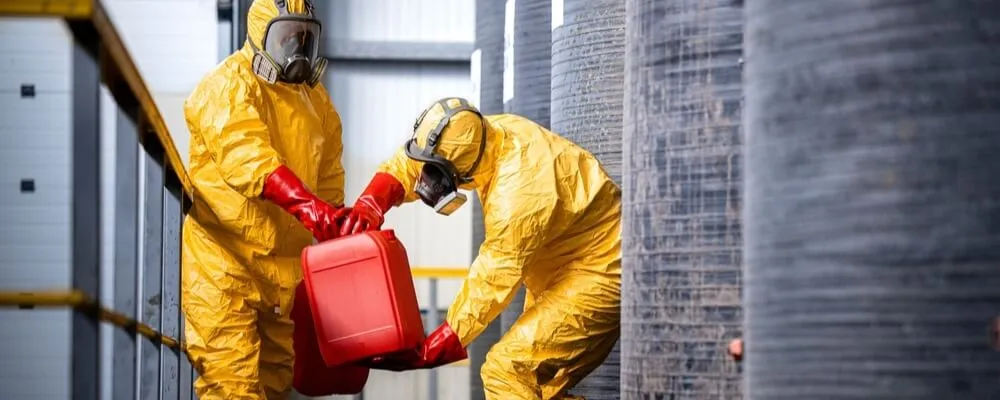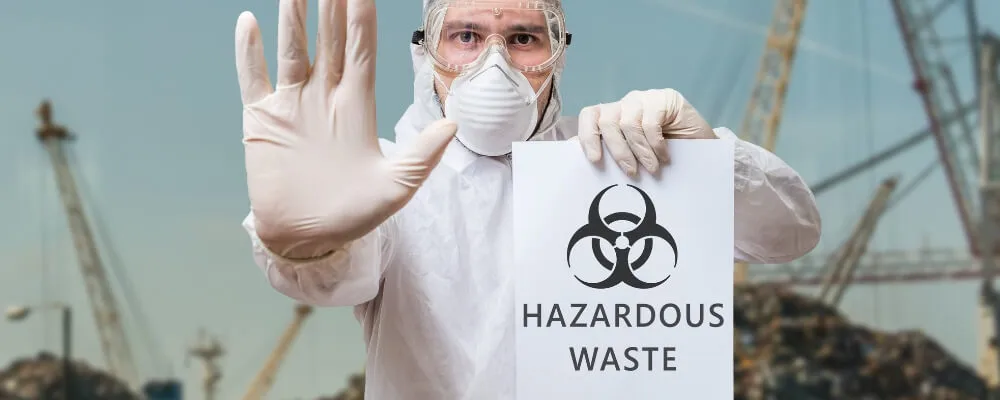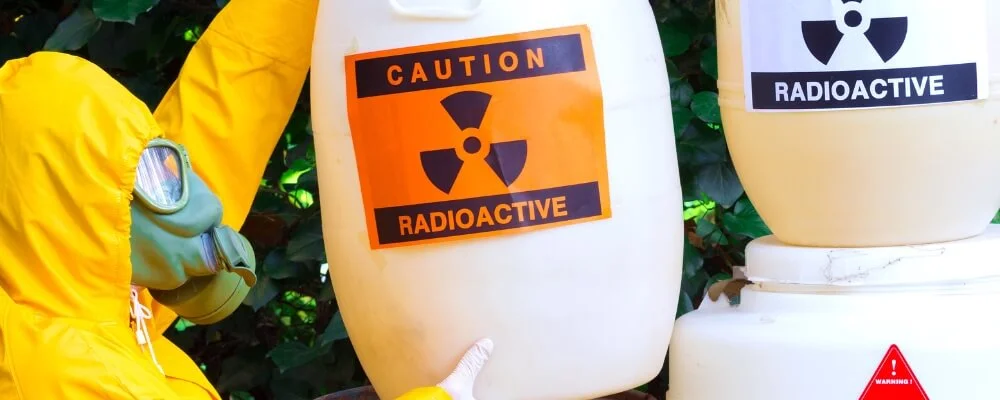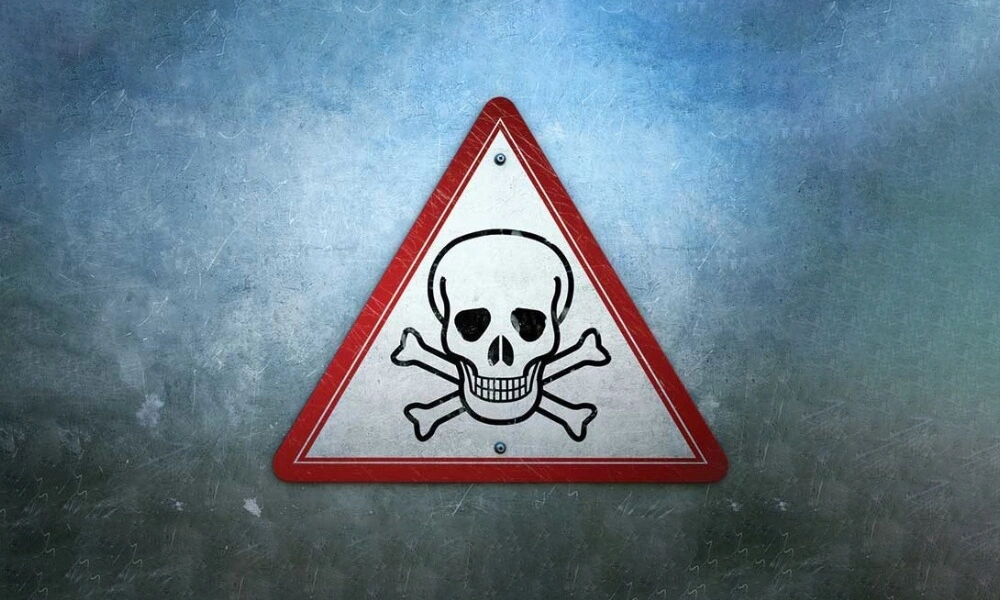Our daily lives are surrounded by potential dangers that could threaten our well-being, our property, and the environment. Hazards are present all around us, whether it’s the chemicals we use in cleaning, the machinery at our workplaces, or the air we breathe. But what exactly makes something hazardous? What real-life examples do we encounter daily, and why is it vital to recognize and understand them?
Through this blog, we aim to clarify the meaning behind labeling something as hazardous and provide ten real-life examples to illustrate the concept. Whether it’s the hidden threats in our homes or the obvious dangers in industrial environments, comprehending what defines something as hazardous is crucial for ensuring our safety, protecting our property, and preserving our environment.
By shedding light on these potential threats and offering insights into their nature, we aim to equip you with the knowledge and awareness to navigate the world more securely. It’s not just about fear or avoidance but about understanding, managing, and taking appropriate precautions when dealing with these potentially dangerous conditions or substances.
Let’s embark on a journey to uncover the complexities of hazardous conditions, substances, and situations. Together, we can build a strong foundation that instills confidence in protecting ourselves and those around us. Stay tuned as we explore the true meaning of “hazardous.”

What Is Hazardous Meaning?
“Hazardous” refers to something that poses a threat or danger to human health, the environment, or property. It can describe substances, activities, situations, or conditions that can potentially cause harm or adverse effects. These hazards can vary in severity and may require special precautions or handling to prevent negative consequences.
Importance Of Recognizing Hazardous Conditions Or Substances
Recognizing hazardous conditions or substances is paramount for various reasons, both immediate and long-term. This recognition helps prevent potential accidents, ensures long-term well-being, and fosters safer living and working environments. Here are the primary reasons why recognizing these hazards is crucial:
- Protection of Human Health: The immediate and most evident reason is to protect one’s health. When ingested, inhaled, or in contact with skin, many hazardous substances can cause severe health issues, ranging from minor irritations to chronic diseases or even fatalities.
- Prevention of Accidents: Many workplace and home accidents occur because individuals aren’t aware of the hazards. Recognizing these conditions early can help prevent accidents like falls, burns, explosions, or chemical exposures.
- Safeguarding the Environment: Hazardous substances, when not handled or disposed of correctly, can pollute the air, soil, and water. This environmental contamination can harm wildlife, destroy habitats, and pollute water sources, affecting humans and the ecosystem.
- Legal and Financial Implications: Ignorance or negligence about hazardous conditions can lead to legal consequences for companies and individuals. Recognizing and addressing these hazards can prevent lawsuits, regulatory fines, and costly cleanup operations.
- Enhancing Workplace Productivity: In work environments, recognizing and addressing hazards can lead to fewer accidents, less downtime, fewer medical leaves, and higher productivity.
- Promotion of Safety Culture: Recognizing hazards isn’t just about addressing immediate dangers. It promotes a culture of safety where individuals are always vigilant and proactive and prioritize well-being over other considerations.
- Educated Decision Making: Recognizing hazardous conditions or substances allows individuals and organizations to make informed decisions about the products they buy, the materials they use, or the processes they implement.
- Public Awareness and Community Health: Recognizing hazards at a community level can lead to public awareness campaigns, ensuring that larger populations are informed and can take preventive measures. For instance, community awareness can prevent widespread health issues if contaminated water sources.
- Reduction in Long-Term Health Care Costs: Immediate recognition and intervention can prevent long-term health issues, reducing personal and public healthcare costs over time.
- Moral and Ethical Responsibility: Beyond legal and financial implications, recognizing and acting upon hazardous conditions is a moral and ethical responsibility for companies and individuals. Protecting human life and the environment should always be a top priority.
Recognizing hazardous conditions or substances is a foundational aspect of ensuring safety, well-being, and sustainability. Whether at the individual, community, or organizational level, such recognition can mean the difference between a thriving, safe environment and one fraught with danger and long-term repercussions.

10 Different Hazardous Examples
The world around us has potential hazards that can threaten human health, property, and the environment. Recognizing and understanding these dangers can help us take appropriate precautions and navigate daily life more safely. Let’s delve into ten different hazardous examples and understand their implications.
1. Hazardous Chemicals
Hazardous chemicals refer to substances that can potentially cause harm or adverse effects on human health, the environment, or property. These chemicals can be toxic, corrosive, flammable, reactive, or hazardous. They are commonly used in various industries for manufacturing, cleaning, and research. Hazardous chemicals include strong acids, bases, solvents, pesticides, and heavy metals. If not handled, stored, or disposed of properly, these chemicals can lead to chemical burns, respiratory issues, environmental pollution, and fires.
2. Flammable Materials
Flammable materials can catch fire easily and propagate flames quickly. These substances can be liquids, gases, or solids. When exposed to an ignition source, they can lead to fires or explosions. Examples of flammable materials include gasoline, alcohol, propane, certain chemicals, and combustible gases. Proper storage, handling, and transportation practices are essential to minimize the risk of fires and explosions.
3. Radioactive Materials
Radioactive materials emit ionizing radiation, such as alpha, beta, and gamma rays. They are commonly used in medical applications (e.g., radiation therapy and imaging) and in nuclear power plants for generating electricity. Radioactive materials can be hazardous to human health and the environment if improperly shielded or handled. High radiation levels can cause radiation sickness, genetic mutations, and increased cancer risk.
4. Biological Hazards
Biological hazards refer to microorganisms, pathogens, viruses, bacteria, and other biological agents that can cause diseases or infections in humans, animals, or plants. These hazards are common in healthcare settings, laboratories, agriculture, and wastewater treatment plants. Examples of biological hazards include influenza viruses, Salmonella bacteria, and HIV. Proper personal protective equipment (PPE) and biosecurity measures are essential to prevent the spread of diseases caused by biological hazards.
5. Asbestos
Asbestos is a group of naturally occurring minerals extensively used in construction materials due to their heat-resistant and insulating properties. However, when inhaled, it was later discovered that asbestos fibers can cause serious respiratory issues, including lung cancer, mesothelioma, and asbestosis. Disturbing asbestos-containing materials can release these harmful fibers into the air, making it crucial to handle and remove asbestos-containing materials with great care and following strict safety regulations.

6. Hazardous Waste
Hazardous waste refers to discarded materials that possess properties that make them dangerous or harmful to human health and the environment. These wastes can be generated from various sources, including industries, households, healthcare facilities, and research laboratories. Hazardous waste can be toxic, flammable, reactive, or corrosive. Examples of hazardous waste include certain chemicals, solvents, pesticides, heavy metals, and radioactive materials. Improper disposal or mishandling of hazardous waste can lead to soil and water contamination, air pollution, and adverse health effects in humans and wildlife.
7. Electrical Hazards
Electrical hazards occur when electrical systems, equipment, or appliances are not properly installed, maintained, or used. These hazards can lead to electric shocks, electrocution, or fires. Electrical accidents can be caused by faulty wiring, damaged cables, inadequate grounding, or negligence while using electrical devices. Proper electrical installation, regular maintenance, and safe operating practices are essential to prevent electrical hazards and ensure the safety of individuals and property.
8. Slippery Surfaces
Slippery surfaces, such as floors or walkways with oil, water, grease, or other substances, pose a significant risk of slips, trips, and falls. These accidents can result in injuries, fractures, and other physical harm. Slippery surfaces are common in kitchens, bathrooms, and outdoor areas, especially during wet or icy conditions. Regular cleaning, warning signs, and anti-slip mats or coatings can reduce the risk of slip and fall accidents.
9. Confined Spaces
Confined spaces are enclosed areas with limited entry and exit points and poor ventilation. These spaces can be found in tanks, tunnels, manholes, or storage bins. Confined spaces can pose various dangers, such as asphyxiation due to a lack of oxygen, exposure to toxic fumes or gases, and physical entrapment. Workers and individuals entering confined spaces should be trained on safety procedures, use appropriate protective equipment, and follow strict protocols to ensure their safety.
10. Mechanical Hazards
Mechanical hazards are associated with machinery and equipment that can cause physical harm to individuals if not properly guarded or operated. Common examples include moving parts, such as belts, gears, blades, or rotating shafts, which can lead to crushing, shearing, or entanglement injuries. Safety guards, emergency stop buttons, and proper training for machine operators are essential to prevent accidents caused by mechanical hazards.

Effects of Ignoring Hazardous Conditions
Ignoring hazardous conditions can lead to a multitude of negative consequences. These effects can range from immediate physical harm to long-term environmental, social, and economic impacts. Here are some of the most prominent effects of overlooking or neglecting hazardous conditions:
- Physical Injuries and Fatalities: The most immediate consequence is the potential for physical harm. Ignoring hazards can lead to accidents resulting in injuries or even deaths. Examples include slipping on a wet floor, exposure to harmful chemicals, or getting caught in unguarded machinery.
- Long-Term Health Implications: Chronic exposure to certain hazards, like asbestos or certain chemicals, can lead to severe health conditions over time. This might include respiratory issues, cancers, neurological disorders, and other chronic diseases.
- Environmental Degradation: Ignoring environmental hazards, such as chemical spills or improper waste disposal, can lead to long-lasting environmental damage. This can result in the contamination of water sources, soil degradation, and harm to biodiversity.
- Economic Costs: Accidents and environmental clean-ups can be expensive. There are direct costs related to medical treatments, compensations, and remediation. Indirectly, there might be a loss of productivity, increased insurance premiums, and potential legal liabilities.
- Legal Repercussions: Regulatory bodies worldwide have established laws and guidelines related to safety and environmental protection. Ignoring hazards can lead to hefty fines, legal actions, or even the shutdown of operations for non-compliant businesses.
- Damage to Reputation: Ignoring hazardous conditions can result in significant reputational damage for businesses. Negative publicity, especially in an age of social media, can erode trust and affect customer loyalty, leading to decreased revenue.
- Decreased Morale and Productivity: Repeated negligence towards hazardous conditions can lower employee morale in a work environment. Workers may feel undervalued and unprotected, decreasing productivity and higher turnover rates.
- Community Impact: Ignored hazards, especially those that affect public spaces or resources, can lead to widespread community health issues. For instance, contamination of a local water source can impact an entire town or city.
- Strain on Healthcare Systems: Increased accidents or chronic conditions due to ignored hazards strain healthcare systems, leading to increased medical costs and potential shortages in medical care facilities.
- Loss of Property: Ignoring certain hazards, like fire risks or structural deficiencies, can result in property damage or complete loss. Rebuilding or replacing can be time-consuming and costly.
- Mental and Psychological Effects: Individuals affected by accidents or those living in environments with ignored hazards can suffer from anxiety, stress, and other psychological disorders. They may live in constant fear or suffer from trauma post-accident.
- Chain Reaction of Hazards: Sometimes, ignoring one hazard can lead to the manifestation of another. For instance, if the chemical is flammable, a chemical spill (first hazard) not cleaned up could lead to a fire (second hazard).
In summary, the consequences of ignoring hazardous conditions are multi-faceted and far-reaching. They emphasize the need for proactive measures, vigilance, and adherence to safety protocols at all levels, from individual actions to institutional policies. It’s a collective responsibility to recognize and act upon hazardous conditions for the well-being of all.
Conclusion
In conclusion, the concept of hazardous encapsulates a broad spectrum of substances, activities, situations, and conditions that possess the potential to inflict harm on human health, the environment, and property. By understanding what makes something hazardous, we become better equipped to navigate the risks surrounding us and take the necessary precautions to ensure safety and well-being.
Throughout this blog, we have explored ten different examples of hazards, each shedding light on how potential dangers can manifest in our daily lives. The array of risks demands vigilance and responsible handling, from hazardous chemicals and flammable materials to radioactive substances and biological hazards.

